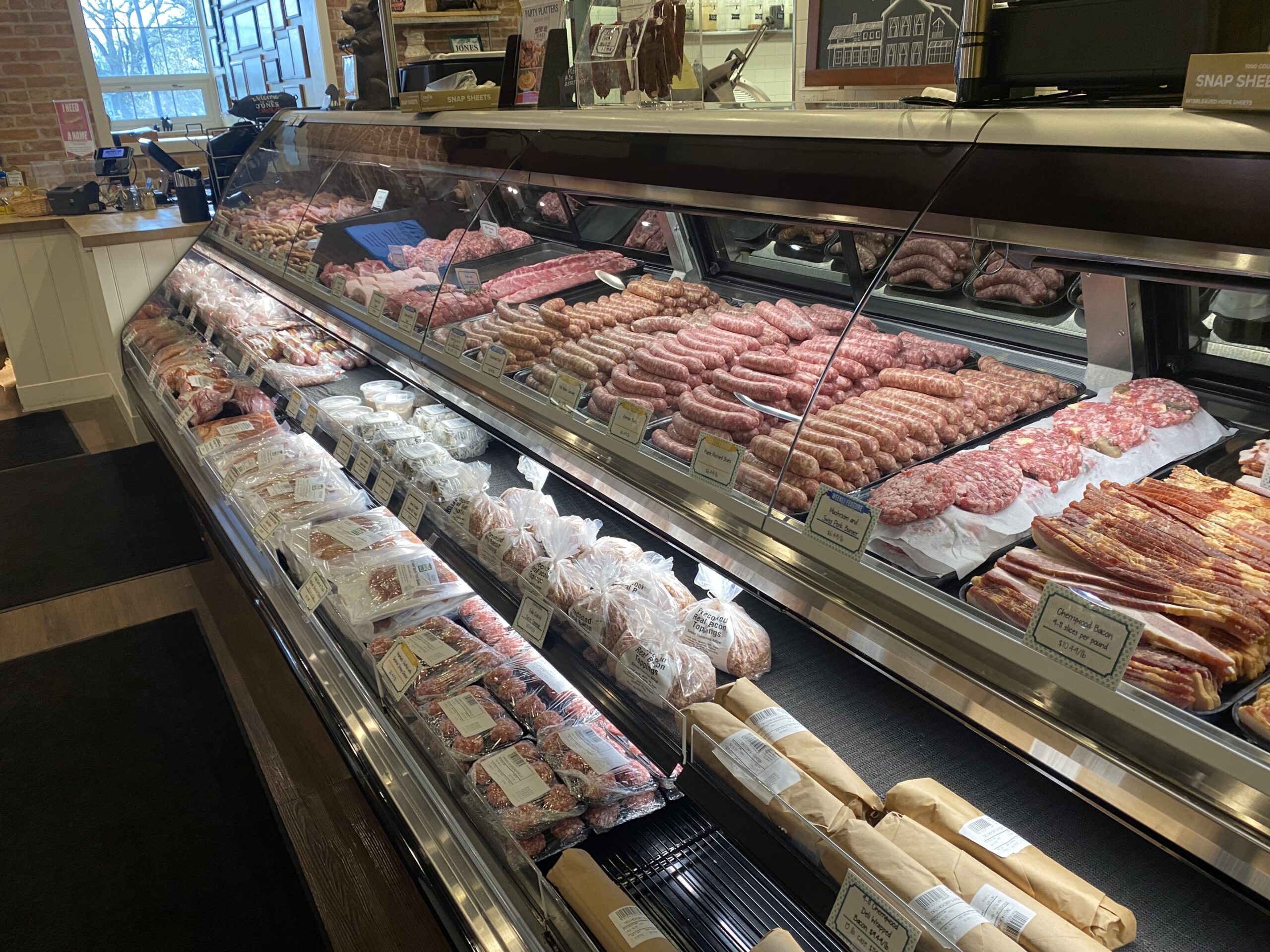Leading Reasons to Patronize Bagley Farms Meat Market Edwardsville IL for Premium Meats
Leading Reasons to Patronize Bagley Farms Meat Market Edwardsville IL for Premium Meats
Blog Article
Uncover the Art of the Butcher's Cut in a Modern Meat Market
In the ever-evolving landscape of modern-day meat markets, the butcher's cut has transcended its conventional origins, merging age-old workmanship with contemporary methods. Today's butchers are not simply processors of meat; they are educated craftsmens that emphasize sustainability and honest sourcing. Their expertise in picking and preparing cuts tailored to certain cooking demands uses an exceptional dining experience. What really sets the modern butcher apart is their capacity to create a much deeper link in between consumers and the origins of their meat. Just how do these masters balance custom with advancement, and what effects does this have for the future of meat consumption?
Evolution of Butchery Strategies
The advancement of butchery techniques reflects an abundant tapestry of technology and adaptation driven by developments in technology, changes in customer need, and a deeper understanding of meat scientific research. Historically, butchery was a craft gave with generations, with methods sharpened over centuries to make the most of yield and flavor. However, the industrial change introduced automation, transforming standard techniques and allowing large-scale handling.
The mid-20th century saw butchery methods better fine-tuned by clinical understandings right into muscle mass biology and meat aging, improving both tenderness and taste. Advancements like vacuum cleaner product packaging and refrigeration prolonged product shelf-life, allowing butchers to expand offerings and improve high quality control. This period likewise marked the surge of customized tools, such as band saws and meat slicers, which raised precision and efficiency in meat handling.

Computerized systems now assist in monitoring animal provenance and optimizing cuts to satisfy certain consumer choices. Furthermore, a rebirth in artisanal butchery has actually arised, blending traditional abilities with modern expertise to cater to customers seeking honest and lasting meat options.
Understanding Meat Cuts
Comprehending the details of meat cuts is important for both butchers and consumers looking for top quality and worth. For butchers, specific cuts reflect ability and regard for the craft, ensuring very little waste and ideal yield.

Recognizing muscle mass structure is important; muscular tissues used much more regularly by the pet often tend to be harder and are best matched for slow food preparation methods, while less-used muscle mass, like those located in the loin, are a lot more tender and perfect for cooking or roasting. Knowledge with these differences encourages consumers to make informed selections, enhancing their cooking undertakings.
Selecting Quality Meat
Choosing the appropriate meat involves even more than simply choosing an aesthetically attractive piece from the display screen. The art of choosing top quality meat calls for a discerning eye and understanding of certain characteristics that indicate quality and quality.
Second of all, think about the marbling, website link which describes the white flecks of fat within the muscle mass. Appropriate marbling is a vital indicator of tenderness and flavor, as it melts during cooking, boosting the meat's juiciness. Bear in mind, higher marbling typically associates with exceptional high quality cuts, such as USDA Prime.
Structure is an additional vital factor; meat must feel solid to the touch, not slimy or overly soft. Furthermore, be mindful of the scent. Fresh meat must have a clean, neutral smell, without any sour or repulsive odors.
Combining Cuts With Cooking Approaches

Conversely, harder cuts like brisket and chuck roast are rich in collagen, which breaks down right into gelatin when cooked slowly. These cuts are ideal for braising or slow roasting, allowing the meat to tenderize over time and establish click here now deep, complex flavors. Cuts such as brief ribs and pork shoulder make out well with slow-cooking approaches, where expanded cooking times change their durable structures right into delicious recipes.
Lamb shanks and oxtail, which call for prolonged cooking to soften, are perfect prospects for stewing or sluggish simmering. These techniques coax out abundant, passionate tastes while keeping wetness. By understanding the unique characteristics of each cut, cooks and home cooks alike can boost their cooking productions, ensuring each dish is both pleasing and remarkable.
The Butcher's Duty Today
Browsing the advancing landscape of the modern-day meat market, the butcher's duty today prolongs past mere prep work of cuts. Contemporary butchers are cooking artisans, teachers, and supporters for lasting methods. They link the gap in between the ranch and the fork by guaranteeing honest sourcing, understanding animal husbandry, and prioritizing openness in the supply chain. This change reflects the growing customer need for top quality over quantity, where provenance and animal well-being are critical.
In addition to crafting precise cuts, butchers now engage directly with clients, using cooking guidance and customizing selections to fit specific requirements and choices. Their knowledge in meat aging, marbling, and flavor profiles encourages customers to make enlightened decisions, boosting their cooking experiences. This individualized solution exhibits the butcher's progressing role as a relied on advisor in the kitchen area.
Moreover, butchers are critical in reducing waste, making use of entire pets to create varied items such as sausages and stocks. This extensive approach not just values the animal yet click here for more info likewise lines up with modern sustainability objectives. By doing this, the contemporary butcher personifies both custom and technology, adjusting to an ever-changing market while protecting the artistry and stability of their craft.
Final Thought
The contemporary butcher's craft elaborately weaves traditional methods with modern-day developments, emphasizing lasting techniques and ethical sourcing. Proficiency in understanding varied meat cuts and top quality indicators equips butchers to offer enlightened referrals, straightening specific cuts with optimal cooking techniques. This competence not only raises cooking experiences however additionally enhances the connection between customers and the beginnings of their food. By recognizing historic methods while welcoming modern demands, the butcher's function remains vital in today's sophisticated meat market (bagley farms meat market edwardsville il).
Report this page